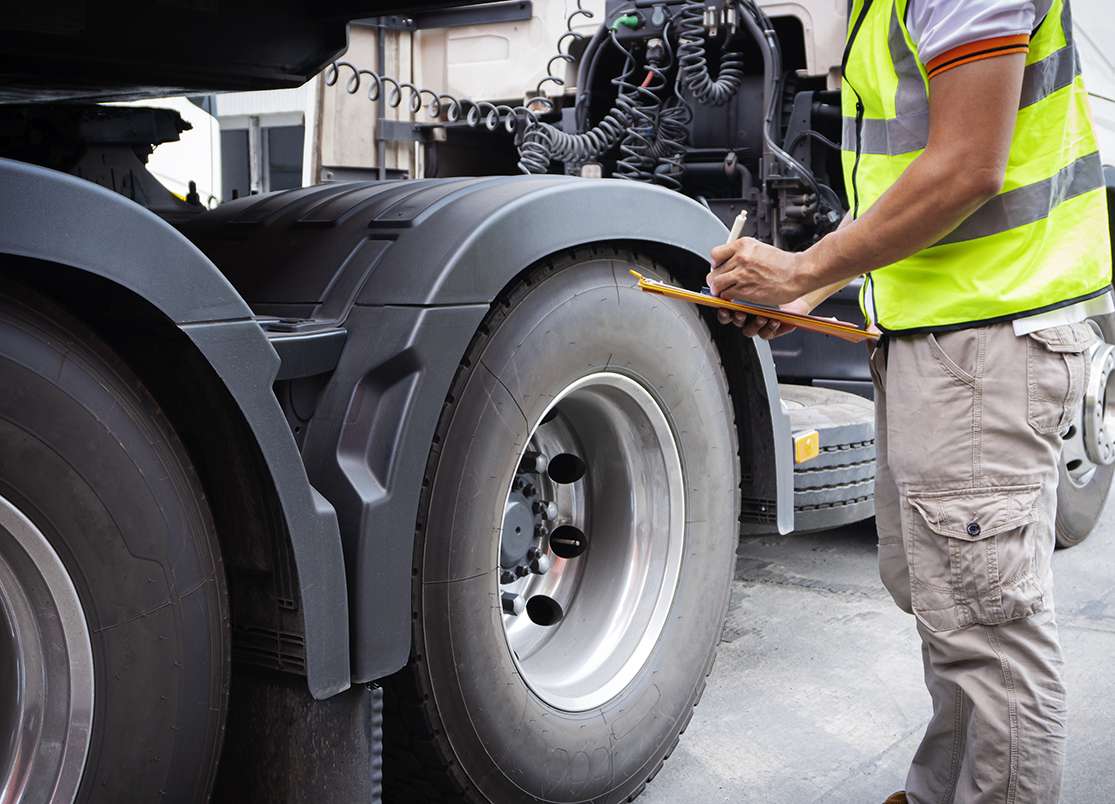The History of Tires—From Point A to Point B

Tires are a big part of our day-to-day at NTB Trucking, keeping our drivers safe and comfortable on long rides throughout the Midwest. The advancement of tires has made it possible to go long distances with heavy loads, no matter the weather. We’d like to take a moment to look at the route tires went through history—from point A to point B.
Those First Rubber Tires—Were They Any Good?
No! While it was an improvement from wood, the very first style of rubber tire was solid rubber with nothing to help it from being too firm in the cold weather, or becoming sticky in the heat of summer. The first important innovation in tire technology was the vulcanization of rubber. Vulcanization is the process applied to tire rubber that Charles Goodyear invented to minimize the effects temperature had on the rubber, allowing for the next big tire innovation: pneumatic (air-filled) tires.
In 1845, the pneumatic tire made of vulcanized rubber was invented by Robert William Thomson. Unfortunately, this tire was too expensive to catch on at the time, and it wasn’t until 1888 that a tire created by John Boyd Dunlap could be afforded by the masses. However, the primary use for this new, affordable rubber tire was for bicycles—not automobiles. In 1895, Andre and Edouard Michelin tried out pneumatic tires on automobiles, but they were not durable, so their use did not take off. It took Philip Strauss to realize in 1911 that the pneumatic tires needed an air-filled inner tube to be used successfully on automobiles. From then on, pneumatic tires became the primary tires used for vehicles. This style allowed for shock absorption and a much smoother ride.
While tires today aren’t perfect, they have much fewer issues than the first tires. Original pneumatic tires were heavy which caused a bumpy, unforgiving ride, were easily punctured causing frequent flats, and had a high manufacturing cost. Today’s tires provide a smooth ride, have a minimal chance of punctures, and are more affordable.
The Evolution of the Modern Rubber Tire
Fast-forward to today, the modern tire is a combination of materials and parts put together in innovative ways to make it so vehicles from the smallest cars to the biggest semi-trucks can get to their destination smoothly and without popping. Combining rubber, steel, fabric, and other materials, the current construction of semi-truck tires can typically last between 150,000 and 500,000 miles, depending on the weight for loads, the route’s degree of difficulty, and proper tire care for each season.
The strides that have been made in tire technology have improved safety and comfort for drivers immensely. There are still common issues with modern tires like cracking or bulging from under or overinflation, cupping or scalloping as a result of bounce from the tire during drives, or tread being worn down so far the tires can no longer grip the road. These problems are typically handled before causing any major problems for drivers with routine checks and maintenance.
Future Tire Technology
All new tire technology is designed to keep tires functioning well so that drivers stay safe on the road. One of the newest ideas that has become more commonplace is a “run-flat” tire that is designed to have stiff sidewalls that retain the shape for up to 50 miles further if you have punctured your wheel, allowing drivers time to pull off to a safe destination, if not make it all the way to a tire store or home. Airless, 3D printed, rubber substitutes, and magnetic levitation are some futuristic ideas already in the works for tomorrow’s tires.
Summary
From the first bumpy rides on solid rubber to the tire of the future that will be eco-friendly and fix its own flats, the goal of tires remains the same: to keep society moving in safety and comfort. At NTB Trucking we keep a keen eye on upcoming technology to make sure all of our drivers in the NTB family are safe and happy from point A to B.
Drive safely with NTB from point A to point B: Apply to drive with NTB.
Ride with Pride: Shop NTB gear from mugs to sweatshirts.